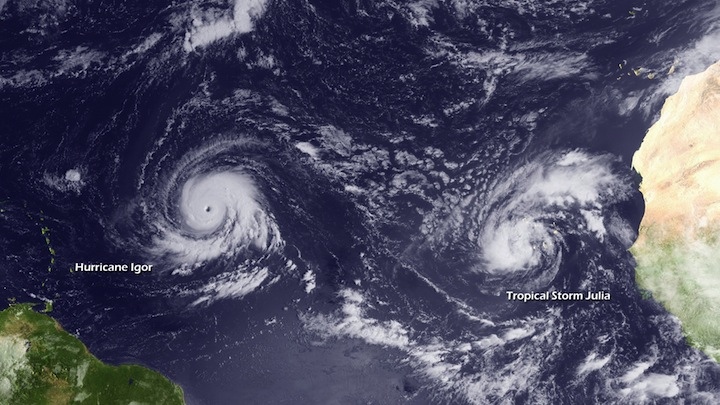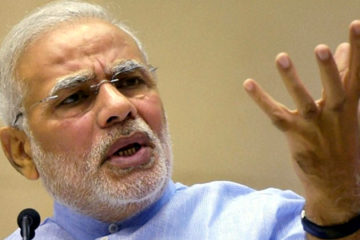An Infrastructure Deal Should Be Easy, But Isn’t: Albert R. Hunt

published Sep 17, 2017 9:00:18 AM, by Albert R. Hunt
(Bloomberg View) —
The stars should be aligned for a big infrastructure deal.
The lingering devastation from the hurricanes that crippled Houston and Florida underscored the national problems of crumbling roads and bridges, inadequate transportation systems and aging electrical grids. President Donald Trump and congressional Democrats both want Washington to spend billions on repairs and construction.
The need is critical. The American Society of Civil Engineers recently gave the country’s infrastructure a D-plus grade and estimated that its deficiencies will cost the economy $4 trillion over the next decade. As Floridians go days, stretching into weeks, without power, and with old people dying in nursing homes, the urgency is clear.
“We should learn from these tragedies, the trail of devastation across Texas and Florida,” said Marcia Hale, president of the nonpartisan advocacy group Building America’s Future. Advocates say the U.S. should invest $1 trillion in public infrastructure, a figure Trump has also touted — before proposing infrastructure spending cuts in his 2018 budget.
Politically, there are opportunities for horse-trading. New York and New Jersey could get federal funds for a badly needed rail tunnel under the Hudson River. Texas could get help paying for a high-speed train between Houston and Dallas. Urban representatives could obtain financing for mass transit while investments in broadband communications would appeal to rural lawmakers.
Most ambitiously, Democrats could even offer to support tax reform, which congressional Republicans badly want, in exchange for Republican votes for infrastructure spending.
Representative Josh Gottheimer, a New Jersey Democrat who’s trying to assemble bipartisan coalitions on issues like infrastructure, was in a meeting with Trump last week and came away cautiously optimistic.
“We talked about different issues but he really emphasized infrastructure and was open to putting it together with tax reform,” Gottheimer said. “There are a lot of tough questions but at least it’s an encouraging first step.”
It should be. But a heavy dose of skepticism is appropriate in today’s polarized Washington, now more dysfunctional than ever under an inexperienced and inexpert administration led by an unreliable president.
“Everyone is talking a good game and everyone knows the needs, but the problem is where to get the money,” said Ray LaHood, a former Republican congressman and Transportation Secretary under President Barack Obama and a forceful infrastructure advocate. “You can’t do it chintzy.”
Although Trump made big promises during the campaign and in his first days in the White House, the administration’s initial plan is for a meager $200 billion spread out over a decade and is reliant on private partnerships. Advocates like LaHood don’t object to public-private collaboration on some road and airport projects, but say the Trump plan isn’t close to adequate.
There are, for example, about 58,000 deficient U.S. bridges, almost a tenth of all the bridges in the country. Tolls could finance a small portion of the necessary repairs, but the real money would probably have to come from a hefty boost in the federal gasoline tax, which been stuck at 18.4 cents per gallon since 1993. LaHood said that 25 states have raised their own gasoline taxes, and “no one has lost an election because of it.”
Even Trump, on occasion, has indicated support for a higher gas tax, but it’s a non-starter for most Republicans. Grover Norquist, the party’s anti-tax enforcer, says he not only opposes any hike but wants to turn the current proceeds back to the states.
Gottheimer and other Democrats, accepting this reality, argue that the best route to a bipartisan deal is to bundle tax reform with infrastructure spending. They see some of the funding coming from tax-reform measures like the revenue that would be generated by allowing corporations to repatriate foreign income at a favorable rate. Republicans, however, want to use that money to cut the corporate tax rate; there isn’t enough to do both.
The bundling approach also assumes that Republicans can agree among themselves on a tax-reform plan that Democrats could buy into. First, Republicans would have to settle their own problems, including poor coordination between the White House and Capitol Hill. Last week, after a Trump Twitter storm, House Speaker Paul Ryan promised an expeditious timetable, one other Republicans consider unrealistic.
Then they’d have to find the will to resist lobbying by interest groups determined to preserve the tax advantages they now enjoy. That’s a huge stretch.
So their final product is likely to be more about tax cutting than actual reform, with a tilt to corporations and the affluent. Few Democrats will support that approach even with infrastructure sweeteners.
As for Republicans, although House Ways and Means Committee Chairman Kevin Brady doesn’t reject linking the two issues, listen again to Norquist, a man of considerable influence in conservative circles: “Putting spending inside a tax reform package simply increases the deficit or reduces the size and power of potential tax cuts.”
That’s all many right-wing Republicans need to hear before they kiss infrastructure improvements goodbye.
This column does not necessarily reflect the opinion of the editorial board or Bloomberg LP and its owners.
Albert R. Hunt is a Bloomberg View columnist. He was the executive editor of Bloomberg News, before which he was a reporter, bureau chief and executive Washington editor at the Wall Street Journal.
To contact the author of this story: Albert R. Hunt at ahunt1@bloomberg.net To contact the editor responsible for this story: Jonathan Landman at jlandman4@bloomberg.net
footer
For more columns from Bloomberg View, visit Bloomberg view
copyright
© 2017 Bloomberg L.P




No Comment